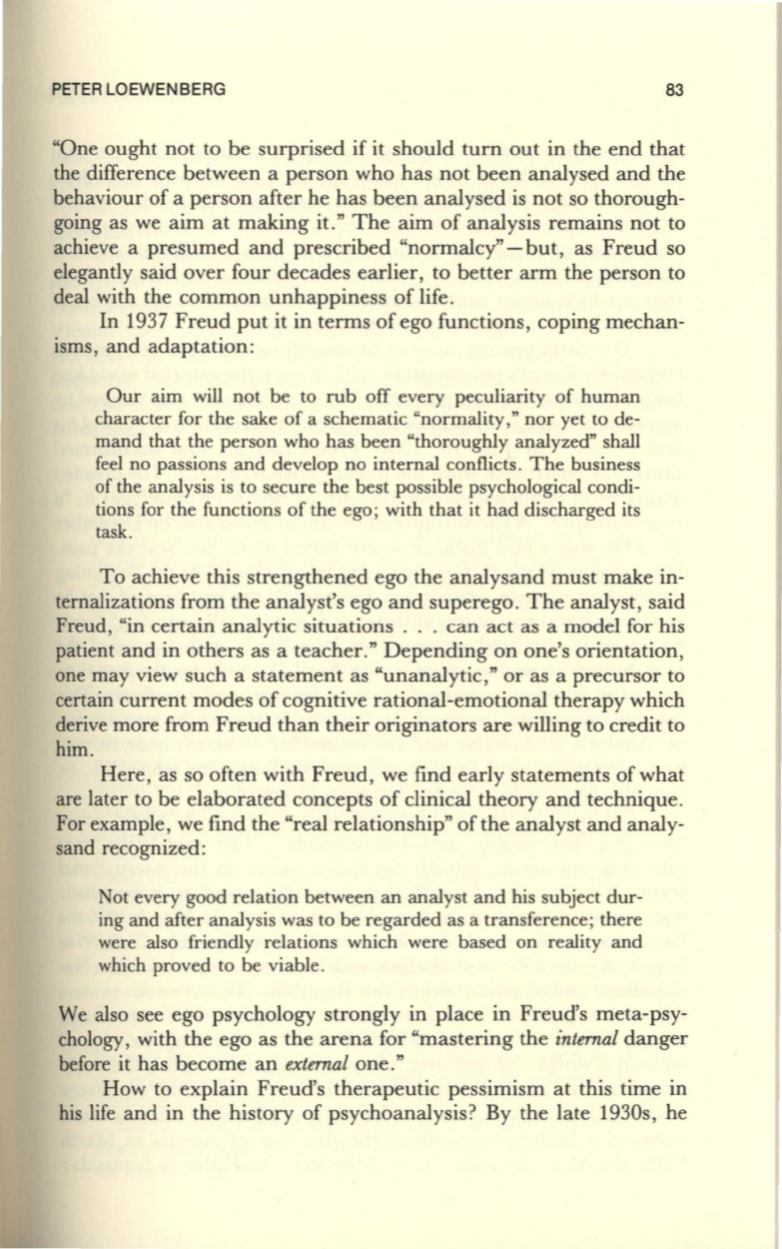
PETER
LOEWENBERG
83
"One ought not to be surprised if it should turn out in the end that
the difference between a person who has not been analysed and the
behaviour of a person after he has been analysed is not so thorough–
going as we aim at making it." The aim of analysis remains not to
achieve a presumed and prescribed "normalcy" - but, as Freud so
elegantly said over four decades earlier, to better arm the person to
deal with the common unhappiness of life.
In 1937 Freud put it in terms of ego functions, coping mechan–
isms, and adaptation:
Our aim will not be to rub off every peculiarity of human
character for the sake of a schematic "normality," nor yet to de–
mand that the person who has been "thoroughly analyzed" shall
feel no passions and develop no internal conflicts . The business
of the analysis is to secure the best possible psychological condi–
tions for the functions of the ego; with that it had discharged its
task.
To achieve this strengthened ego the analysand must make in–
ternalizations from the analyst's ego and superego. The analyst, said
Freud , "in certain analytic situations ... can act as a model for his
patient and in others as a teacher." Depending on one's orientation,
one may view such a statement as "unanalytic," or as a precursor to
certain current modes of cognitive rational-emotional therapy which
derive more from Freud than their originators are willing to credit to
him.
Here , as so often with Freud, we find early statements of what
are later to be elaborated concepts of clinical theory and technique.
For example, we find the "real relationship" of the analyst and analy–
sand recognized:
Not every good relation between an analyst and his subject dur–
ing and after analysis was to be regarded as a transference; there
were also friendly relations which were based on reality and
which proved to be viable .
We also see ego psychology strongly in place in Freud's meta-psy–
chology, with the ego as the arena for "mastering the
internal
danger
before it has become an
external
one."
How to explain Freud's therapeutic pessimism at this time in
his life and in the history of psychoanalysis? By the late 1930s, he


